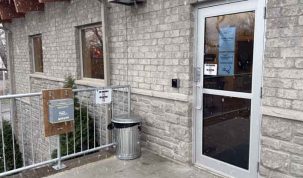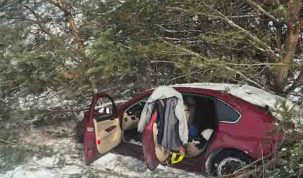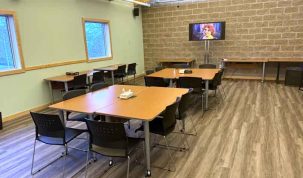By Cecilia Nasmith/Today’s Northumberland
Haliburton Kawartha Pine Ridge District Health Unit Medical Officer of Health Dr. Natalie Bocking set aside part of her weekly media scrum to share some safe trick-or-treating tips.
“There are some key public-health messages to remember – most important, if you are feeling sick or your child is feeling sick, you stay home,” Dr. Bocking led off with.
“We continue to emphasize that outdoors is safer than indoors so, if you are trick-or-treating, remember to stay outdoors, to be spaced from other groups of kids. Try not to cluster on the doorstep of a house or around the candy bowl.
“Wear masks. Not costume masks but actual masks approved for preventing the spread of COVID-19.”
The health unit discourages wearing a regular costume mask and an everyday COVID-19 mask at the same time, because of the heat build-up and discomfort that could develop. Instead, they encourage people to use creativity in developing their costuming around the everyday masks they wear at school and at work.
It wouldn’t hurt to take along hand sanitizer and use it occasionally, Dr. Bocking added.
“And when people get home, wash your hands thoroughly before eating anything or taking treats out.”
And the same tips that cover the little costumed visitors also cover the home owners, Dr. Bocking said. Leave a bowl of candy out if you don’t feel well. Keep your hands sanitized. Don’t visit too long with the little ghosts and goblins (to discourage clustering).
If you’re headed for a Halloween party, she continued, remember that Ontario is still in Stage Three of the Safe Reopening Act – meaning there are still limits on how many people can gather indoors.
As for masks, Federal guidance indicates that, if you are in a gathering where everyone is fully vaccinated, you can consider removing yours if the comfort level is there – if you are among friends with whom you can discuss your vaccination status and have confidence that it’s a safe setting.
As for Santa Claus parades, Dr. Bocking said the health unit is not in the position of an approval authority, though it can offer guidance to municipalities and organizers. Their main concern will be to discourage onlookers gathering in throngs.
“When I think of parades, I think of large crowds pressed closely together of largely strangers – that is not something I am comfortable with right now,” she stated.
Dr. Bocking’s session had the usual information on local epidemiology, indicating three active cases in Northumberland County and 12 in the City of Kawartha Lakes.
“It’s nice to see that number really quite low,” she said.
“It’s trending down again, and I think this is consistent with what we are also seeing provincially.”
The seven-day rolling average is four cases per 100,000 population, and the only current outbreak is in a Cobourg retirement home, with three cases. It seems a stable situation, she said, and could potentially be declared over within a week.
So far in the school year, 19 new cases have been associated with schools (students and staff), though all have been determined to have originated in the community – not in the school.
Over the past 14 days, more than one-third of 31 new cases identified have been in those aged 29 and under. These age groups also have the lowest immunization rates.
Of 320 cases confirmed since July 1, 63.1% have been in the unvaccinated. The rest are split between those partially immunized (19.7%) and in those fully immunized (17.2%).
Of the eight individuals hospitalized with COVID since July 1 (some of whom required ICU care), seven were unvaccinated and one was partially vaccinated.
At this time, 86.7% of the HKPR residents aged 12 and up have one shot, and 82.3% have two.
“We are continuing to see an increase in the proportion of people vaccinated. It does continue to show a slow increase, but it’s increasing nevertheless,” Dr. Bocking said.
For those who have questions about vaccination, she added, there is a provincial phone line, resources listed on the HKPR website and specialized clinics throughout the province.
At this time, vaccination efforts focus on a mobile targeted strategy with thinks like school- and community-based clinics and drive-by clinics. Anyone who would like to take advantage of these can find a listing of times and locations on the HKPR website, and both mRNA vaccines will be available.
“All our clinics are open to walk-ins – you do not need an appointment for a first or second dose,” she said.
At present, they are waiting provincial announcements on eligibility for third doses and the go-ahead to vaccinated those aged five to 11.
“These populations are larger than what we can likely handle in our targeted mobile strategy. We might potentially go back to larger clinics throughout our geographic area for what we anticipate will be a high demand.”
Dr. Bocking said parents can have confidence in any approvals announced for vaccinations for the five-to-11 age group.
“Health Canada has said it will make it a priority. We sometimes talk about fast-tracking – that doesn’t mean they are skipping parts of their review. It just means it is prioritized, and they are dedicating resources they need to do the review as quickly as possible. They still do all the rigourous methods that they need for any other vaccine or drug that has applied for approval in Canada.”
The province has directed health units to put plans in place for the vaccination of this age group, Dr. Bocking said.
“We are in a position to support this roll-out very quickly.”























